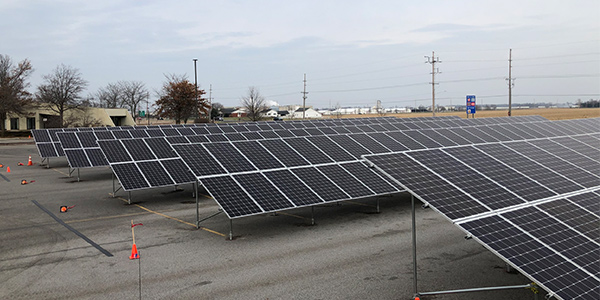MISO members say the grid operator needs both hard work and new faces to comply with FERC’s sweeping distributed energy directive, Order 2222.
Referencing what staff have nicknamed the “two-by-four” order, MISO’s Todd Hillman, senior vice president and chief customer officer joked last week during an Advisory Committee call that he’d like to use the lumber to “hit myself in the head with when I read the order.”
The Organization of MISO States’ president-elect and North Dakota regulator Julie Fedorchak said complying with the order will require different people than the usual stakeholder suspects. She said MISO will need ideas from utility operators, many of whom will be new to the stakeholder process.
As an example, Fedorchak said she didn’t think any distributed energy resource aggregators were participating in the teleconference Dec. 9.
“I think that’s a noteworthy absence,” she said.
FERC in September ordered RTOs and ISOs to open their markets to DER aggregations, now largely limited to providing demand response (Order 2222, RM18-9). (See FERC Opens RTO Markets to DER Aggregation.)
MISO stakeholders last month created a DER task force to navigate compliance with Order 2222. MISO hopes to have a plan drafted by March. (See MISO Says Communication Key to DER Order.)
“[A] compliance filing at the end of June is a pretty tight sprint,” Hillman said.
Sustainable FERC Project Director John Moore called Order 2222 the commission’s “most significant” order to date and one that “reflects the dynamically changing nature of the power grid.” He said the order recognizes increasing two-way flows on the distribution system as well as the jurisdictional relationships between states, RTOs and FERC.
“This whole order seems to be a brave new world in jurisdictional questions,” MISO Director Nancy Lange said.
Moore said if compliance is well-executed, the new market participants could help MISO access more resources and assuage concern over recent maximum generation events.
He said the RTO even has a role to play in helping distribution companies develop or improve interconnection standards and get interconnection costs right.
“Interconnection costs are a huge barrier” to generation projects, Moore said.
DTE Energy’s Nick Griffin, representing the transmission-dependent utilities sector, said the order could supplant the need for some transmission investment as it could maximize the distribution system’s use and efficiency.
“It might also put pressure on the MISO interconnection queue,” he said.
“We have to make sure the distribution utility has the information necessary to plan and manage their system,” Otter Tail Power’s Stacy Hebert said.
Several members asked staff to ensure DER electrons aren’t double counted at the retail and wholesale levels.
Griffin said MISO should provide its wholesale DER transaction data to distribution companies, making the output easier to track.
“We will need a lot of input and interaction with our stakeholders,” said MISO Executive Vice President of Market and Grid Strategy Richard Doying.
MISO has about 11 GW worth of demand response resources currently participating in the capacity market, mostly through “decade-old utility programs,” Doying said. An OMS survey of DER resources last year indicated an additional 4 GW worth of capacity on distribution systems, much of it rooftop solar.
“We don’t have a good handle on the amount or types we’re going to see,” Doying said. He said that MISO is working diligently to determine how many and what kinds of DER will participate at the wholesale level.





